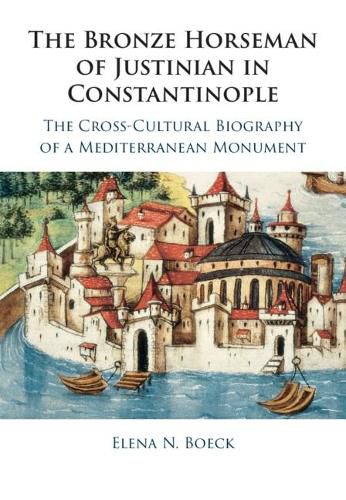Readings Newsletter
Become a Readings Member to make your shopping experience even easier.
Sign in or sign up for free!
You’re not far away from qualifying for FREE standard shipping within Australia
You’ve qualified for FREE standard shipping within Australia
The cart is loading…






Justinian’s triumphal column was the tallest free-standing column of the pre-modern world and was crowned with arguably the largest metal equestrian sculpture created anywhere in the world before 1699. The Byzantine empire’s bronze horseman towered over the heart of Constantinople, assumed new identities, spawned conflicting narratives, and acquired widespread international acclaim. Because all traces of Justinian’s column were erased from the urban fabric of Istanbul in the sixteenth century, scholars have undervalued its astonishing agency and remarkable longevity. Its impact in visual and verbal culture was arguably among the most extensive of any Mediterranean monument. This book analyzes Byzantine, Islamic, Slavic, Crusader, and Renaissance historical accounts, medieval pilgrimages, geographic, apocalyptic and apocryphal narratives, vernacular poetry, Byzantine, Bulgarian, Italian, French, Latin, and Ottoman illustrated manuscripts, Florentine wedding chests, Venetian paintings, and Russian icons to provide an engrossing and pioneering biography of a contested medieval monument during the millennium of its life.
$9.00 standard shipping within Australia
FREE standard shipping within Australia for orders over $100.00
Express & International shipping calculated at checkout
Justinian’s triumphal column was the tallest free-standing column of the pre-modern world and was crowned with arguably the largest metal equestrian sculpture created anywhere in the world before 1699. The Byzantine empire’s bronze horseman towered over the heart of Constantinople, assumed new identities, spawned conflicting narratives, and acquired widespread international acclaim. Because all traces of Justinian’s column were erased from the urban fabric of Istanbul in the sixteenth century, scholars have undervalued its astonishing agency and remarkable longevity. Its impact in visual and verbal culture was arguably among the most extensive of any Mediterranean monument. This book analyzes Byzantine, Islamic, Slavic, Crusader, and Renaissance historical accounts, medieval pilgrimages, geographic, apocalyptic and apocryphal narratives, vernacular poetry, Byzantine, Bulgarian, Italian, French, Latin, and Ottoman illustrated manuscripts, Florentine wedding chests, Venetian paintings, and Russian icons to provide an engrossing and pioneering biography of a contested medieval monument during the millennium of its life.